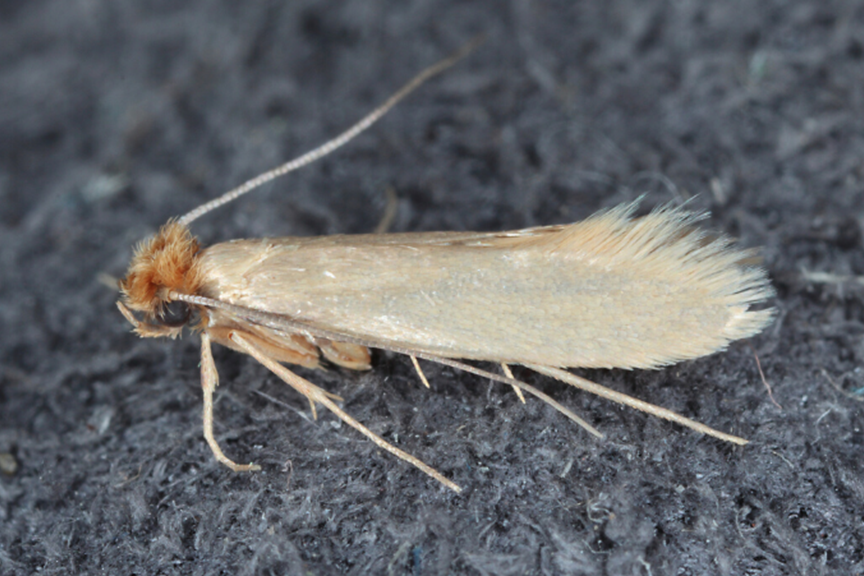Clothes Moths Control in Your Home
Insecta Leptidoptera

Insecta Leptidoptera

Clothes moths are real pests in the home. They destroy our many fabric items such as furniture, bedding, curtains, clothing, bags and accessories. The damage is caused by the larval stage (caterpillar) of the clothes moth as they feed on items made from natural and synthetic fibres. As with many other pests, some people may be allergic to the particles produced by clothes moths such as from cast skins (moults) and faeces which may cause skin or respiratory reactions.
Given the immense damage to the many valuable fabric items in the home and in some cases, the potential risk to human health, it is very important to control clothes moths at the earliest sign of infestation.
Two of the more common clothes moth species in Australia are the Webbing Clothes Moth (Tinea pellionella) and Case-Making Clothes Moth (Tineola bisselliella), both of which are introduced species.
Adults are moths which are long, slender and delicate looking, generally 6 to 10 mm long. Webbing clothes moths are a yellowish-beige with a metallic sheen, whereas case-making clothes moths are a dull, mottled-pattern of light and medium browns.
The head and collar region are covered in fine short hairs. On webbing clothes moths, these hairs are a reddish-gold colour, while case-making clothes moths are a light brown.
At the side of the head are two large, dark-brown to black compound eyes. Attached to the front of the head are a pair of long, straight and slender antennae which are held in a backward facing position at rest. Adults have rudimentary and non-functioning mouthparts and as such, lack the ability to feed. All feeding is done during the larval stage.
Behind the head, attached to the upper side and middle section of the body (thorax) are two pairs of wings. Wings have distinct fringed edges of fine hairs and hindwings are paler in colour than forewings. At rest, wings fold back along the length on the body and at full extension, wings span 9 to 16 mm. Attached to the underside of the thorax are three pairs of long and thin legs used for walking, running and jumping.
Clothes moth larvae are caterpillars which are long, thin and tubular. The body is soft with a cream to yellowish-cream colour. At the front of the body is a distinct reddish-brown head capsule and chewing mouthparts. Larvae produce fine silk threads from the mouth having been manufactured by specialised glands in the body. Webbing clothes moth larvae have no eyes, while case-making clothes moth larvae have two simple eyes on either side of the head.
Behind the head, on the underside of the body are three pairs of true legs, each pair is attached to the first three segments of the middle section of the body (thorax). An additional three pairs of stubby legs (prolegs) are found further along and towards the rear section of the body (abdomen).
Both case-making and webbing clothes moth larvae build specialised cocoon-homes from spun silk which act as camouflage and physical protection. Case-making clothes moth larvae carry their cocoon-home – either tubular or flattened almond shape – on their back. As the larvae travel and feed, the cocoon picks up material covering it in fabric fibres, dust and hairs. Larvae are often found climbing up walls and curtains near a food source. Webbing clothes moth larvae's cocoon-home is stationary and is often covered in fibres from the nearby food source and faeces (frass).
Female clothes moths prefer to walk rather than fly, while males can sometimes be seen flying. However, clothes moths are still considered weak flyers.
Shortly after emerging from the pupal stage (stage of development from caterpillar into moth), adults fly and mate. After choosing a suitable laying site, females lay up to 50 eggs, then shortly die thereafter due to the inability to feed. Eggs are oval-shaped, cream-coloured, sticky and are less than 1 mm long. Eggs are laid on or near a suitable food source for the larvae and hatch between 4 to 21 days. Eggs hatch into caterpillars and shed skin (moult) at each stage of growth development (instar). Webbing Clothes Moth larvae live between 1 month and up to 2 and a half years, if triggered into a hibernative state. The case-making clothes moth larvae generally live for 2 to 3 months. Larvae then close over their cocoon in order to pupate into the adult form.
Adults are night-dwelling, but unlike most other moths, are not attracted to light.
Larvae prefer fibres which are dirty or stained and are often found in crevices, junctions and seams of household fabric items such as:
Larvae are also found feeding on:
Wash any garments and linen suspected to be infested with eggs in the washing machine on hot and then place into the drier for at least 30 minutes. Alternatively, hang clothes on the line in full sun and brush fabric item as this will cause the eggs and larvae to fall.
To reduce the potential for dermatitis reactions to the cast skins (moults), or, from living and dead moths and larvae, use gloves, and pick up mess using a dust pan and broom. Ensure areas are well vacuumed and, on hard surfaces, wipe up with a moist paper towel then discard into the rubbish bin.
Clothes Moth larvae damage can cause holes in various household items and fabric items. However, damage can be confused with Silverfish and Carpet Beetles.
Further evidence of Clothes Moth infestation includes: